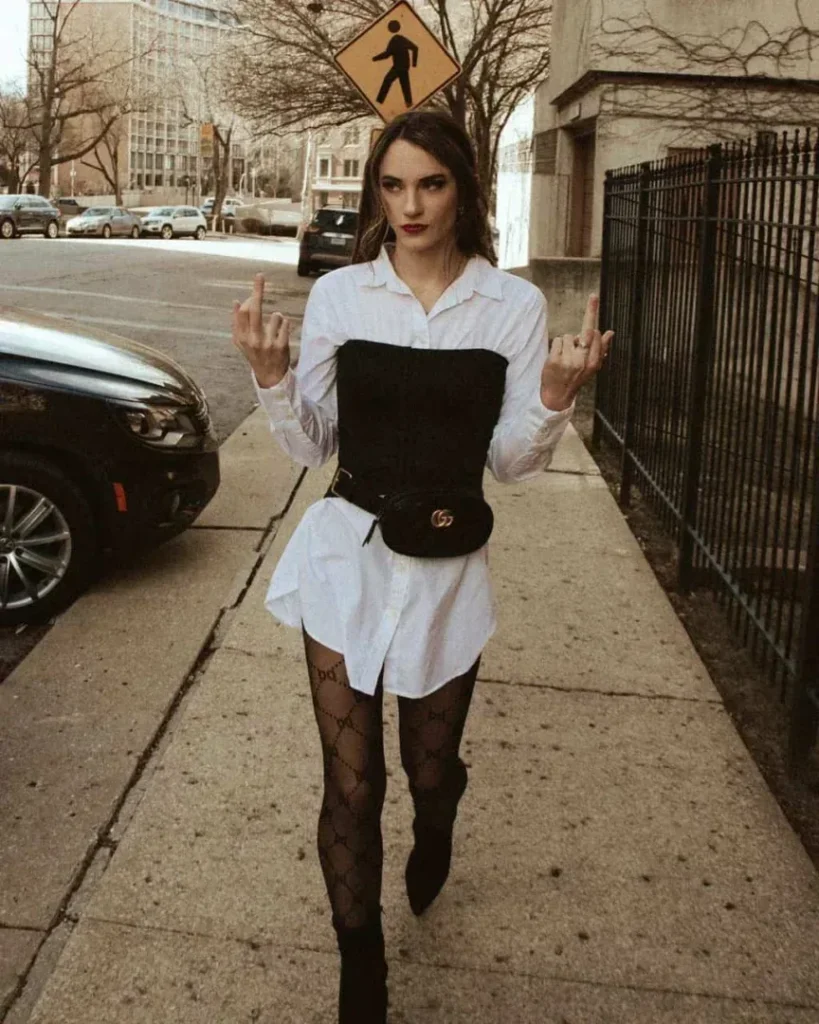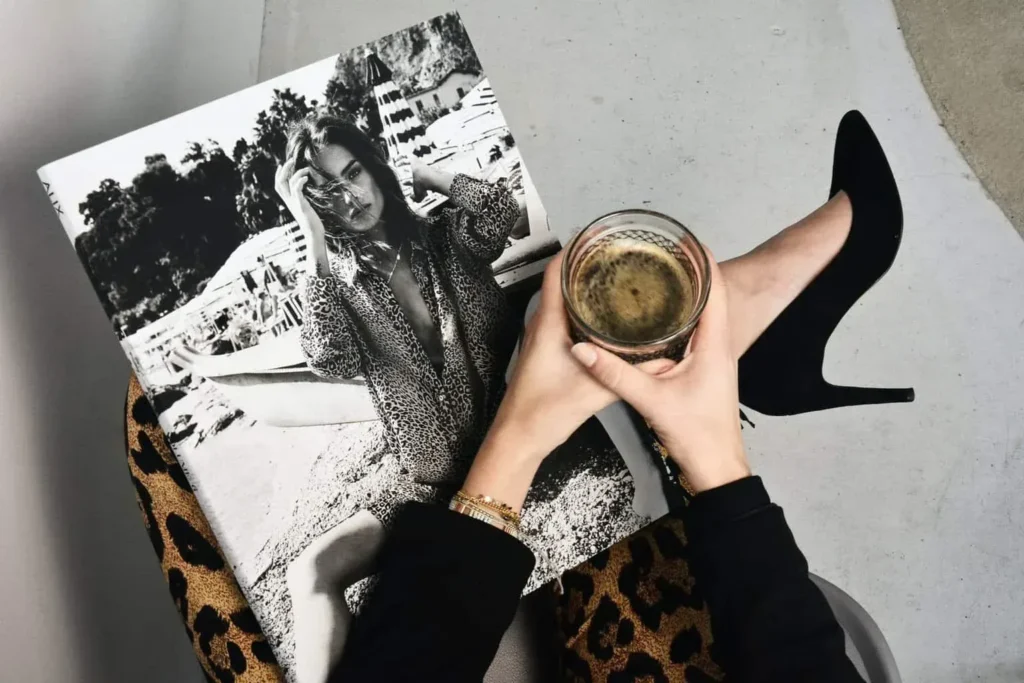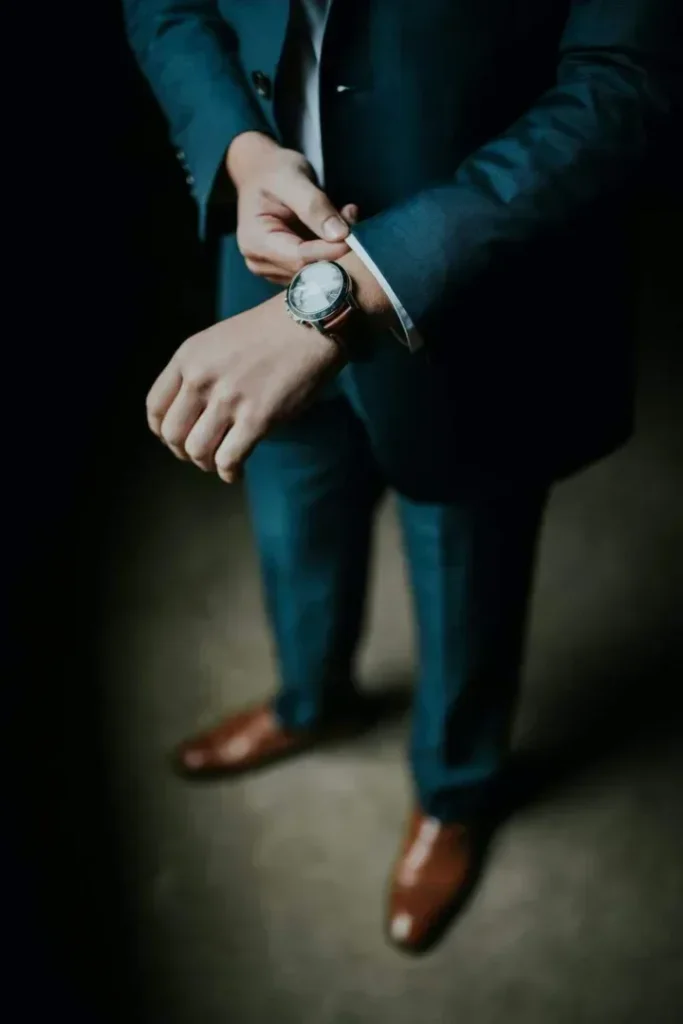So you’re wondering what retro style looks like? Well, picture this: bold geometric patterns, vibrant colors, and funky accessories. Retro style takes us back to the iconic fashion trends of the past, capturing the essence of nostalgia and bringing it to the present. From flared jeans and mod dresses to platform shoes and polka dots, the retro aesthetic is a delightful blend of vintage charm and modern flair. Whether you’re embracing the psychedelic prints of the 1960s or channeling the disco vibes of the 1970s, retro style is all about celebrating the bold and the unique. So, if you’re ready to turn heads and make a statement, it’s time to explore the exciting world of retro fashion.

This image is property of images.unsplash.com.
Understanding Retro Style
Retro style refers to a design aesthetic that draws inspiration from the past, particularly the mid-20th century. It is characterized by a nostalgic and sentimental appeal, taking cues from previous decades and incorporating them into modern contexts. Understanding the key characteristics and influences behind retro style can help us appreciate and embrace this timeless aesthetic.
Definition of Retro Style
The term “retro” is derived from the Latin prefix “re-” meaning “backward” or “behind.” It signifies a return to styles and trends from earlier eras, often evoking feelings of nostalgia and fondness for the past. Retro style encompasses various aspects such as fashion, interior design, graphic design, music, film, television, and advertising.
Why the term ‘Retro’
The use of the term “retro” to describe this particular style reflects the idea of going back in time and rediscovering elements from the past. It acknowledges the fondness and interest people have in revisiting and embracing old trends, reviving them in a modern context. By adopting retro styles, individuals can add a touch of vintage charm and personality to their lives, creating a unique and nostalgic appeal.
Key characteristics of Retro Style
Retro style is defined by several key characteristics that help distinguish it from other design aesthetics. These include bold colors, geometric patterns, and the use of iconic symbols and motifs from specific eras. Retro style often incorporates elements such as chrome accents, vinyl records, and vintage appliances, providing a sense of authenticity and capturing the essence of a bygone era. It embraces simplicity and minimalism while exuding an air of sophistication and elegance.
Origin and Development of Retro Style
The origins of retro style can be traced back to the influence of past decades and the subsequent popularization of vintage aesthetics in various areas of design and culture. Its development can be seen through the emergence of different retro-revival periods, each characterized by a return to specific eras and styles.
Influence from past decades
Retro style draws inspiration from a wide range of past decades, with each era contributing its unique element to the overall aesthetic. The 1950s, with its iconic mid-century modern design, brought sleek lines and minimalist forms. The 1960s embraced bold colors, psychedelic patterns, and pop art influences. The 1970s introduced earth tones, shag carpets, and a bohemian vibe. By incorporating elements from these decades and more, retro style captures the essence of nostalgia and transforms it into contemporary design.
Popularization of Retro Style
The popularization of retro style can be attributed to several factors, including the cyclical nature of fashion and design trends. As time progresses and new styles emerge, there is often a longing to revisit the past and rediscover what was previously popular. This desire for nostalgia and authenticity has led to the resurgence of retro style in many industries, including fashion, interior design, graphic design, music, film, television, and advertising.
Retro-revival periods
Retro style has experienced various revival periods throughout history, with each period showcasing a distinct focus on specific eras. For example, the 1970s saw a resurgence of interest in the Art Deco era of the 1920s, with its geometric shapes and luxurious materials. In the 1990s, there was a fascination with 1960s mod fashion and design. These revival periods not only reintroduced retro elements into the mainstream but also influenced contemporary trends and aesthetics.
Retro Style in Fashion
Retro style has made a significant impact on the fashion industry, influencing clothing, accessories, and hairstyles.
Retro clothing and accessories
Retro clothing often takes inspiration from specific decades, such as 1950s swing dresses with full skirts and polka dots or 1970s wide-legged pants and bohemian prints. It embraces vintage silhouettes, fabrics, and patterns, bringing a sense of timeless elegance to contemporary fashion. Retro accessories, such as cat-eye sunglasses, statement jewelry, and classic handbags, further enhance the overall retro look.

This image is property of images.unsplash.com.
Retro hairstyles
Hairstyles also play a crucial role in retro fashion, with each decade having its distinct hair trends. Finger waves and victory rolls evoke the glamour of the 1920s and 1940s, while beehives and bouffants represent the iconic hairstyles of the 1960s. By incorporating these retro hairstyles into modern fashion, individuals can achieve a complete vintage-inspired look.
Influence of Retro Fashion on modern trends
Retro fashion continues to influence modern trends, as designers often draw inspiration from past decades. The reimagining of retro styles in contemporary fashion helps create a sense of nostalgia and uniqueness. Retro-inspired clothing has become increasingly popular, with many people embracing its timeless charm and individuality in their personal style.
Retro Style in Interior Design
Retro style has a significant presence in interior design, transforming living spaces into nostalgic havens reminiscent of past eras.
Characteristics of Retro Furniture and Decor
Retro furniture and decor often feature mid-century modern designs characterized by clean lines, sleek forms, and minimalist aesthetics. Materials such as wood, plastic, and metal are commonly used, alluding to the simplicity and functionality of the past. Retro decor incorporates vibrant colors, bold patterns, and playful motifs, adding a sense of energy and personality to the space.
Incorporating Retro elements in home design
Incorporating retro elements into home design allows individuals to create spaces that are both visually striking and evocative of a specific era. Vintage furniture pieces, such as Eames chairs and kidney-shaped coffee tables, can add a touch of retro elegance. Mixing retro and modern elements, such as placing a retro-inspired wallpaper in a contemporary setting, creates a harmonious balance between the past and the present.

This image is property of images.unsplash.com.
Retro colors and combinations in interior design
Retro color palettes often include vibrant hues and bold contrasts. Earthy tones, pastel shades, and vibrant pops of color are commonly used to create a sense of playfulness and nostalgia. Combining complementary colors, such as turquoise and orange or mustard yellow and brown, adds visual interest and creates a distinct retro ambiance in interior spaces.
Retro Style in Graphic Design
Retro style has a unique presence in the world of graphic design, captivating audiences with its nostalgic appeal and vintage charm.
Retro typography
Retro typography often incorporates bold, geometric letterforms reminiscent of mid-century advertising and signage. The use of vintage fonts and styles evokes a sense of authenticity and captures the spirit of the past. Retro typography can be seen in various applications, from logos and packaging to posters and album covers.
Image usage in Retro Graphic Design
Retro graphic design frequently utilizes vintage-inspired illustrations, iconic symbols, and imagery that evoke specific eras. Elements such as pin-up girls, classic cars, record players, and retro appliances are commonly incorporated into designs, creating a sense of nostalgia and capturing the essence of a bygone era.
Color schemes in Retro designs
Color plays a crucial role in retro graphic design, with palettes inspired by specific eras. Vibrant colors, such as aqua blue, hot pink, and sunny yellow, are often used to create a sense of energy and playfulness. Pastel shades, on the other hand, evoke a softer and more romantic atmosphere. The strategic use of color schemes helps convey the retro aesthetic and transports viewers back in time.

This image is property of images.unsplash.com.
Retro Style in Music
Retro style has left its mark on the world of music, inspiring various genres, instruments, and visual aesthetics.
Retro genres
Retro music encompasses a wide range of genres that draw inspiration from past eras. From rockabilly and swing of the 1950s to the psychedelic sounds of the 1960s and the disco beats of the 1970s, each era has its distinct influence on retro music. These genres often incorporate vintage instruments, melodies, and production techniques, capturing the essence of bygone eras and appealing to nostalgic audiences.
Retro instruments
Retro instruments, such as analog synthesizers, electric guitars, and vinyl record players, are often utilized in retro-inspired music. These instruments not only produce a unique and authentic sound but also add a visual element reminiscent of past eras. The use of retro instruments enhances the overall retro aesthetic and contributes to the nostalgic experience for both musicians and listeners.
Visual aesthetics of retro music
The visual aesthetics of retro music include stage performances, album artwork, and music videos that embrace the styles and fashions of specific eras. From Elvis’s iconic suits and pompadour hairstyle to David Bowie’s avant-garde outfits and Ziggy Stardust persona, retro music takes inspiration from the past and transforms it into a visual spectacle. These visual elements create a sense of nostalgia and add depth to the overall retro music experience.
Retro Style in Film and Television
Retro style has made a significant impact on the world of film and television, captivating audiences with its nostalgic appeal and vintage charm.

This image is property of images.unsplash.com.
Retro-themed movies and series
Retro-themed movies and series transport viewers back in time, recreating the look and feel of specific eras. From the glitz and glamour of the 1920s in “The Great Gatsby” to the neon-lit streets of the 1980s in “Stranger Things,” retro-themed films and series provide a visual feast for audiences seeking a nostalgic escape. These productions carefully recreate the costumes, set designs, and overall atmosphere of the past, immersing viewers in a bygone world.
Costume and set design in Retro film and television
Costume and set design play crucial roles in bringing retro style to life in film and television. From the elegant dresses and sharp suits of the 1940s to the bell-bottom jeans and psychedelic patterns of the 1970s, retro costumes allow actors and actresses to embody the essence of a specific era. Set designs recreate the aesthetics and environments of the past, incorporating vintage furniture, decor, and props to create an immersive retro experience for audiences.
Popularity and appeal of Retro cinema and TV shows
Retro cinema and TV shows have gained immense popularity due to their ability to transport audiences back in time and evoke nostalgia. They offer a unique form of escapism, allowing viewers to immerse themselves in the aesthetics, fashion, and culture of past decades. Retro-themed productions have become beloved and cherished by audiences of all ages, appealing to both those who lived through those eras and those who long for a connection to the past.
Retro Style in Advertising
Retro style has found a special place in the world of advertising, using nostalgia as a powerful tool to engage consumers and evoke positive emotions.
Retro style ads
Retro style ads incorporate elements from past eras, evoking nostalgia and capturing the attention of consumers. These ads often feature vintage aesthetics, including typography, imagery, and color schemes, creating a sense of familiarity and authenticity. By tapping into nostalgic emotions, retro style ads connect with audiences on a deeper level, forming a positive association with the product or service being advertised.
Why Retro style is popular in advertising
Retro style is popular in advertising because it allows brands to tap into the collective memory and shared experiences of consumers. By revisiting the visual language and cultural references of specific eras, retro ads evoke warm feelings of nostalgia and the comforts of a simpler time. This nostalgic appeal helps create a strong emotional connection between the brand and the consumer, leading to increased brand affinity and loyalty.
Impact of Retro advertisements on consumer behavior
Retro advertisements have a significant impact on consumer behavior by leveraging the power of nostalgia. Studies have shown that nostalgia can enhance positive emotions, increase willingness to pay, and drive brand loyalty. By using retro aesthetics, advertisers can create a sense of familiarity and emotional resonance, leading consumers to feel more connected to the brand and more likely to make a purchase.
Modern Interpretations of Retro Style
In addition to the revival of past eras, modern interpretations of retro style have emerged, blending the old with the new to create a contemporary yet nostalgic aesthetic.
Modern Retro
Modern retro takes inspiration from past decades but infuses them with a contemporary twist. It incorporates vintage elements into a modern context, adapting them to suit the tastes and preferences of today’s audience. Modern retro allows individuals to enjoy the nostalgia of the past while embracing the conveniences and advancements of the present.
Differences between Retro and Vintage
While the terms “retro” and “vintage” are often used interchangeably, they encompass different aspects of the past. Retro refers to the revival and reinterpretation of past styles in a modern context, while vintage refers to authentic items from a specific era that are typically at least 20 years old. Vintage items hold a historical significance and often carry a higher value due to their authenticity.
Modern industries influenced by Retro Style
Retro style has influenced various modern industries, reflecting a desire to connect with the past and create unique, evocative experiences. From retro-inspired cafes and bars to vintage-inspired fashion brands and retro-themed events, the influence of retro style can be seen across different sectors of the economy. This blending of past and present allows for a celebration of timeless design and cultural nostalgia.
The Future of Retro Style
As design trends continue to evolve, the future of retro style remains bright, with new trends and innovations awaiting exploration.
Predicted trends in Retro Style
Predicted trends in retro style include the continued influence of specific eras such as the 1980s and 1990s, the incorporation of digital elements into retro designs, and the blending of multiple eras to create a personalized and unique aesthetic. As technology advances, we can expect to see retro style adapting and evolving to embrace the possibilities of the future while maintaining its nostalgic allure.
The sustainability of Retro Style
Retro style is inherently sustainable, as it encourages reusing and repurposing items from the past instead of constantly consuming new products. By embracing retro fashion, interior design, and other retro-inspired industries, individuals can reduce waste and carbon footprints while indulging in a timeless aesthetic. The longevity and timeless appeal of retro style contribute to its sustainability in a world increasingly focused on environmental consciousness.
How modern technology impacts Retro Style
Modern technology has both influenced and been influenced by retro style. Digital platforms and social media have made it easier to access and share retro-inspired content, allowing for a broader revival and modern interpretation of past eras. At the same time, advancements in technology have enabled the creation of new retro-inspired products, such as retro-styled smartphones and digital cameras, bridging the gap between the past and the present. The interaction between modern technology and retro style opens new possibilities for innovation and creativity.
In conclusion, understanding retro style involves recognizing its nostalgic appeal, key characteristics, and influence across various industries. From fashion and interior design to graphic design, music, film, television, and advertising, retro style continues to captivate audiences and evoke warm feelings of nostalgia. As it evolves and adapts to the present, retro style is likely to remain a timeless aesthetic that connects the past and the future, granting us the opportunity to celebrate the beauty and charm of bygone eras.
